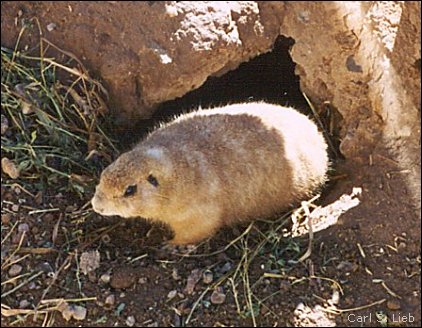

Back in the 1800s, Darwin noticed that newly cleared fields for pasturage were littered with rocks, but that old fields had few if any on the surface. It struck him that some agency must be covering up the stones through time, and he soon seized on the idea that earthworms, bringing their castings to the surface, were responsible. To test the idea, he fixed a flat stone to the ground and watched over the years as it was slowly buried. Now, this action by earthworms is important for plant growth, since vegetation and weather tend to deplete the soil of nutrients. New nutrients, carried up from below, replenish those lost.
But what accomplishes this in the desert? Earthworms do best in damp
soils that include plant debris. Except along drainage ways and in cultivated fields,
arid lands support few earthworms. What we do have, however, are lots of burrowing
animals. Pocket gophers, certainly, but also kangaroo rats and ground squirrels and
loads of other mammals. Even some insects work unknowingly to keep the desert
flourishing.

Contributor: Florence E. Schwein, University of Texas at El Paso.
Desert Diary is a joint production of the Centennial Museum and KTEP National Public Radio at the University of Texas at El Paso.

Black-tailed Prairie Dog, one of many Southwestern animals taking the role of earthworms. Photograph by Carl S. Lieb.